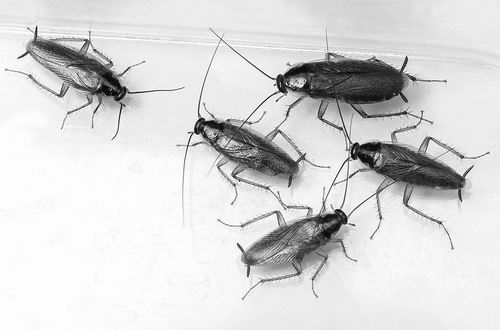German cockroaches are not from Europe.
No one wants to take a German cockroach (German cockroach) as a pet, but almost every family has it. As the largest cockroach in the world, it only lives among humans, and humans may be responsible for its transmission. A genetic study published in the Proceedings of the National Academy of Sciences on May 20 found that medieval wars and colonial trade helped this cockroach reach almost every corner of the world.
Cesar Capinha, a biogeographer at the University of Lisbon, Portugal, who was not involved in the study, said that the discovery was remarkable, indicating that many species have left their habitats intentionally or unintentionally through travel and trade. He pointed out that a United Nations report in 2023 pointed out that humans had introduced more than 37000 species to new regions around the world, and more than 200 species were arriving each year.
In 1776, Carl Linnaeus, a famous naturalist, formally described the German cockroach for the first time based on the specimens collected in Germany. But naturalists soon realized that it might not have originated in Europe, because there were no similar cockroaches in Europe at that time. Since then, this insect has been found in all continents except Antarctica, and humans usually regard it as a major pest.
"German cockroaches are very common, but people know little about them," said Tang Qian, a biologist at Harvard University's Roland Institute. So he and his colleagues tried to use DNA to find the answer.
Ten years ago, Tang Qian tried to reveal the history of cockroaches by analyzing DNA fragments called microsatellites. However, these tiny genetic materials are not enough to explain the genetic relationship between different populations of German cockroaches. Now that the entire genome can be easily sequenced, Tang Qian decided to re-examine his original specimen.
By comparing mitochondrial genes, researchers found that German cockroaches are most closely related to Asian cockroaches (Cockroaches asiatica). The latter was first described in Japan and later spread to the United States. In order to track the path of German cockroaches out of Asia, scientists mapped the genome similarity map of 281 samples from 17 countries where humans live on the continent. This correlation pattern shows that cockroaches played a dominant role in the world in the two migration waves, which may have been completed with the help of human beings.
Tang Qian said that about 2100 years ago, probably in India or Myanmar, German cockroaches differentiated from Asian cockroaches by adapting to human food, and then began to expand. About 1200 years ago, it moved westward to the Middle East, which coincided with the trade and war of the Umayyad and Abbasid dynasties. Researchers believe that these insects hitchhike across the desert through bread baskets.
About 390 years ago, the species continued to expand eastward to Southeast Asia, coinciding with the establishment of colonial trade between the Netherlands and the British East India Company. In about a century, merchant ships brought them to Europe. Tang Qian said that steam boats and improved housing heating and piping systems have created a warm and humid environment that cockroaches like, enabling such mobile insects to spread all over the world.
Cleo Bertelsmeier, a conservation biologist at the University of Lausanne, Switzerland, said: "Researchers have found that adapting to human lifestyles is the key to the spread of German cockroaches, which I think is the real reason."
"This paper matches the pattern well with actual historical events," Capinha added. But he wondered whether the genome data matched the historical records of cockroaches arriving at different places.
The DNA of museum specimens can be used to better understand the evolution of cockroaches. Tang Qian is going further back to the past. "The genus itself has a history of 200 million years, but we know little about it," he said.
"Understanding the origin and genetic diversity of cockroaches can help us find ways to deal with insecticide resistance. When they become pests in restaurants and hotels, this is very important." Tang Qian said, "The number of German cockroaches is growing very fast. If they are not controlled, their number will be a huge number in a few months."
(Plum Muzi)
Relevant paper information:
https://doi.org/10.1073/pnas.2401185121













